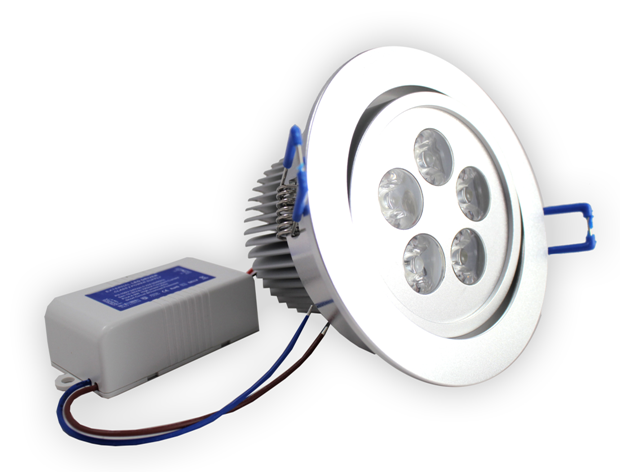Free shipping on orders over £50
TradeHURRY! SPRING SALE Now On! Get 10% Off Using Code KEEP10! Plus FREE SHIPPING On All Orders Over £50!
LED Downlights Explained
 Recessed downlights, or ‘can lights’ as they are called in America, are a type of light fixture commonly found in kitchens and bathrooms.
Recessed downlights, or ‘can lights’ as they are called in America, are a type of light fixture commonly found in kitchens and bathrooms.
Unlike traditional fixtures, which protrude some distance from the ceiling, downlights are designed to sit up inside the ceiling so that only their front face can be seen.
A typical downlight consists of a pressed steel or cast aluminium lamp holder with a decorative fascia. During installation, the downlight is inserted into a suitably sized hole where it is held in place with either spring or compression clips, depending on the type of downlight purchased.
The actual physical size and brightness of the downlight varies considerably – ranging from small decorative models measuring about 50mm in diameter, to larger commercial units that are around 160mm in diameter.
Downlights offer a number of advantages over traditional fixtures – both aesthetic and practical.
Firstly, they look really good – providing plenty of illumination while preserving the neat, streamlined appearance of a modern kitchen, living room or bathroom. Even our smallest downlights boast 230 lumens.
Secondly, they are versatile and can be installed anywhere as long as there is enough room for the housing. Our standard downlights typically have recess depths of 133mm, whereas our short can range come in at around 80mm recess depth.
Finally, in terms of practicality, downlights can be used individually to create strong task lighting, pr in combination to create general ambience. For the latter, many people prefer the option of a dimmer switch, with which to vary the level of light if necessary.
When choosing downlights over traditional fixtures, it is important to determine how many and what brightness you need. Downlights should be evenly spaced for complete coverage and to avoid areas of the room being left in darkness.
There are a number of “rules of thumb” regarding LED downlights that we’ve put together here that can help you decide the type and number you need.
There are a number of different types of downlight available, all with their own merits.
Fixed downlights are non-adjustable and direct all their light downwards. Tilt downlights have a moveable centre, which as the name suggests, can be tilted in order to adjust the direction of the beam and create points of focus throughout the room.
Eyeball downlights are similar to tilts, but offer a greater degree of control over the beam angle. Finally, wall washers have a hinged housing that can be rotated 90o for a ‘wall washing’ effect.
LED downlights are some of the latest developments in recessed lighting technology, offering greater longevity – up to 50,000 hours of life, affordability – they use up to 90% less electricity, reducing your bills, and safety – many of our downlights come with fire rated protection, giving you added security in the event of a fire.
While most traditional downlights can be retrofitted with LED bulbs, it is often better to buy a fully integrated LED downlight. In this case, the LEDs and driver are incorporated into the unit and cannot be removed, but offer greater performance and reliability.
One of the main issues surrounding downlights is heat. Due to their design, most of the heat produced by a downlight is directed towards the rear of the unit, which can potentially cause a fire risk, particularly in attic bedrooms where they are close to the flammable insulation.
As LED downlights produce significantly less heat, they are much safer to use in these locations.
Remember when buying your downlights, to check that they are fire rated, and that they have a suitable IP rating when installing in the bathroom.
For more information about our LED downlights, feel free to give our team a call on 0116 321 4120, or send us an email to cs@wled.co.uk.






 Search
Search


